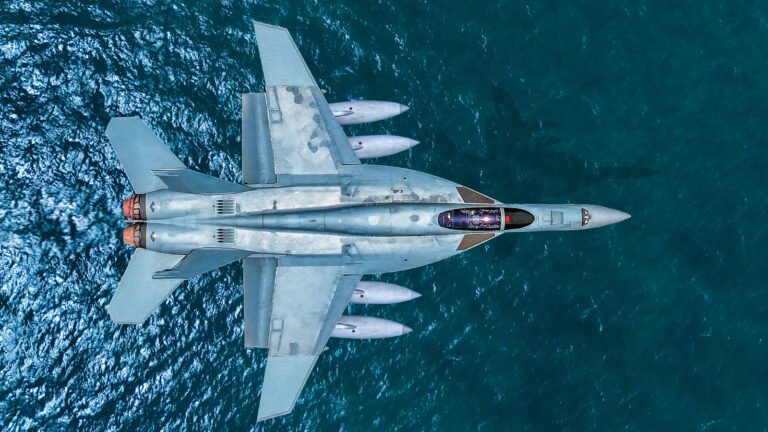BMI Calculator – Check your Body Mass Index for free!
Why Don’t Fighter Jets Have Missiles That Fire Backwards?
Photos For You/Getty Images
When it comes to aerial combat, fighter jets are among the most lethal pieces of weaponry a military can let loose. From terrifying speeds, sophisticated targeting systems, and an overwhelming amount of firepower, these aircraft seem to have it all. Some of these fighter jets are even capable of hovering, taking off and landing vertically, giving them an even more intimidating aura than they already possess. Among the things that many, whether they are fighter jet enthusiasts or simply saw one at an event, a museum, or in a movie, know is that these war machines mainly fire their missiles forward.
The whole idea of backward-firing missiles on a fighter jet doesn’t feel that out of place when you first entertain it. However, when you consider the physics typically involved when these aircraft are in flight, then things start to make sense. Most fighter jets are known to fly at blinding speeds. If these jets were to fire a missile backward, said missile would first have to overcome the jet’s forward velocity before stabilizing and tracking toward its target. The amount of time and energy wasted here would likely hamper its chances of finding its mark.
Many fighter jets fly at over 600 miles per hour
Peter R Foster IDMA/Shutterstock
Fighter jets are among the most essential aerial platforms for military use today. While not every country has one of those speedy and equally stealthy F-35 Lightning IIs in its fleet, many can at least proudly claim they have a few fighter jets in their air force. These jets come with several armaments on board, including guns, deployable bombs, air-to-air, and air-to-ground missiles. It is these weapons, coupled with the jet’s speed, stealth, and accuracy, that make them as lethal as they are. However, many of these weapons, especially missiles, usually fire toward the front.
Most jets fly at subsonic speeds during regular flight, which means their speed usually exceeds 600 miles per hour. Some, like the F-22 Raptor, which, believe it or not, the U.S. Navy doesn’t fly, supercruises around Mach 1.82, equivalent to 1,220 miles per hour. If such an aircraft were to fire a missile backward, the missile would first have to decelerate from 1,220 mph down to zero before accelerating to hit its target. Of course, such a transition wouldn’t happen instantly and would require more time and fuel compared to a forward-firing missile.
The fighter jet’s aerodynamics also significantly influence missile positioning
Sanit Fuangnakhon/Shutterstock
A fighter jet’s aerodynamics would need to be taken into account if backward-facing missiles were to be installed and deployed. Every aspect of a fighter jet’s silhouette is painstakingly designed and crafted to slice through the air with as little resistance as possible, thereby reducing any drag that could build up and slow the aircraft. Missiles aimed at the jet’s rear would likely disrupt the airflow around the fighter jet when fired, thereby hampering the aircraft’s overall performance.
Another important reason why you never see any backward-firing missiles is because of technological advancements in aerial combat. Air-to-air engagements are quite different from what they used to be decades ago. Fighter jets like the F-35 have virtually negated the need for dogfights altogether, thanks to its advanced weapons and targeting systems that can take out enemy aircraft from miles away.
In situations where such engagements were to occur, there are all-aspect missiles, which can track an enemy regardless of their position in relation to the missile even if the target is behind the launching aircraft.
BMI Calculator – Check your Body Mass Index for free!

